
5 things to know about Winnipeg’s big sewage problem
115 billion litres, 70 years to fix, $5.5 billion in lawsuits
Thirteen kilometres west of Imperial Oil’s Kearl oilsands mine, near where her family used to hunt and trap, Jean L’Hommecourt has her own cabin. It’s a place where she remembers being able to drink right from the creek. It’s where she used to go to harvest plants and berries. It’s where, she says, she feels most at home. It’s where she belongs.
L’Hommecourt, now 59, grew up near the northern Alberta community of Fort Chipewyan and continues to harvest from the land — downstream from the oilsands.
In February, she harvested a moose near her cabin, and shared her bounty with family and Elders.
Little did she know that in May of last year, Imperial had found discoloured water in the marshy land outside Kearl’s tailings area and eventually confirmed the discolouration was from tailings leaks that were infiltrating groundwater and bubbling up to contaminate the surface water as well.
Both the company and the Alberta Energy Regulator failed to notify impacted communities for nine months after first spotting that water — and not until a second incident spilled 5.3 million litres over a retaining wall and into the surrounding land in February 2023, leading to a flurry of concerns about drinking water, wildlife and contamination of land.
Those millions of litres spilled days before L’Hommecourt got her moose.

Imperial says the spill took place on Jan. 31, but wasn’t detected until Feb. 4, when it was reported to the energy regulator. The regulator says Imperial initially estimated the spill to be 2,000 litres, but on Feb. 5 during a site visit, the company said its estimate had increased to 5.3 million litres.
The regulator says it will not comment on why there was a delay in reporting or possible repercussions due to its ongoing investigation of the incident. Meanwhile, there is ongoing uncertainty surrounding the cause and effects of the spill.
“What if something happens to them?” L’Hommecourt says of those who shared her moose. “I kind of feel that responsibility that I might have made them sick by consuming the meat and I feel sad that I have to feel that way.”


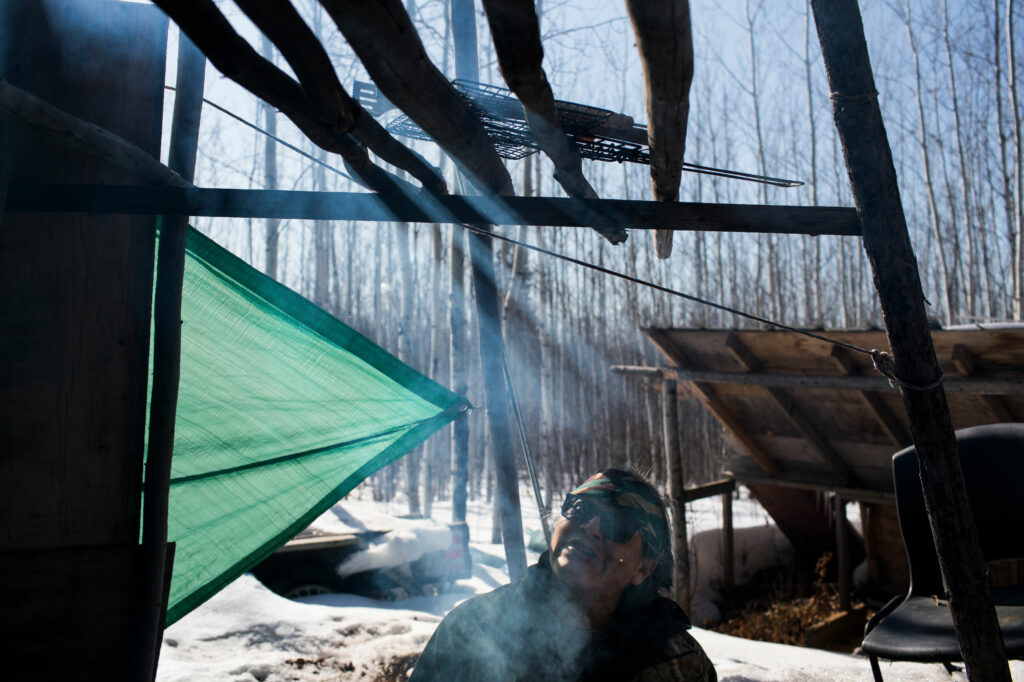

This is a region where many still live off the land and where many also work in the oilsands. Where politics — local, provincial, national and global — coalesce and clash.
The spill renewed debate about how much is enough when it comes to the impact of the oilsands on surrounding communities. It has also raised the difficult question of how to work with an industry that so many people in this region depend on without sacrificing the land.
“In order for you to take care of it, to manage it, you have to be part of it,” Chief Allan Adam of the Athabasca Chipewyan says in reference to the economic importance of the oilsands to this community. “That’s now your new trapline.”


Hovering over the oilsands mines in a helicopter near Fort McMurray, Alta., more than 400 kilometres north of Edmonton, it’s hard to maintain perspective. The mind shrinks the scale so that you can take it all in, and only snaps back into place when you realize the tiny truck you’re looking down on is the size of a small apartment block.

Open pits and tailings ponds fill your field of vision, partially obscured by the brown haze kicked up by those enormous trucks. From their edges, the boreal forest stretches in all directions.
There are 160 billion barrels of oil buried under 142,200 square kilometres in northern Alberta, but this is the only region where it can be dug up in large open-pit mines. Just over 1,000 square kilometres has been dug up so far — an area larger than the city of Calgary. Elsewhere, it is removed by injecting steam into the ground to soften the bitumen before it’s pumped to the surface.


The tailings ponds, where the companies store their wastewater and toxic byproducts, have also continued to swell since 1967, when Great Canadian Oil Sands, now Suncor Energy, marked the launch of the world’s first large-scale oilsands mining.
Since then, the regulator hasn’t signed off on a single cleanup of a tailings pond — known in the industry as a reclamation certificate — as companies struggle to find ways to deal with the messes they leave behind. There are now active discussions with the federal and provincial governments about releasing treated tailings into the river to help reduce the ponds. The combined tailings now cover an area bigger than Vancouver or downtown Toronto.
L’Hommecourt’s cabin is a mere pixel on the landscape.




But the scale of the developments isn’t the only factor that comes to bear on the communities in northeast Alberta.
In 2021, Alberta produced more than three million barrels of oil per day from the oilsands region, and, between 2021 and 2022, contributed $11.6 billion to the government in royalties.
Imperial Oil, the company behind the recent nine-month-long tailings leak, earned $7.34 billion in net income in 2022.
The economic fortunes of the entire province rise and fall with the oilsands.

Downstream of the oilsands in Fort Chipewyan, the scale is different. The land is immense, but the community of Fort Chipewyan — the oldest town in Alberta — is small. There are 798 people who call this place home, according to the latest census, the vast majority of whom are Indigenous — Athabasca Chipewyan, Mikisew Cree and Métis. Fort Chipewyan acts as a home base for the nations and many of their members. Others are spread out over reserves and traditional territory throughout the delta.

For much of the year, the town is only accessible by plane or boat. In winter, it can be reached by road, via a route that — after passing through Suncor’s Fort Hills mine — is without services, developments, towns or cell service along its 177-kilometre length.
The route passes over muskeg and hills, winding through the scraggly pines of the boreal forest — its surface a combination of puddles, potholes, mud and ice — before it drops into the wide delta where the road smooths out and a dashboard map tells you you’re driving over the water.
The town, established more than two centuries ago as a hub for the fur trade, has always been a crossroads. It sits on the edge of a wide inland delta where the Peace and Athabasca Rivers converge.


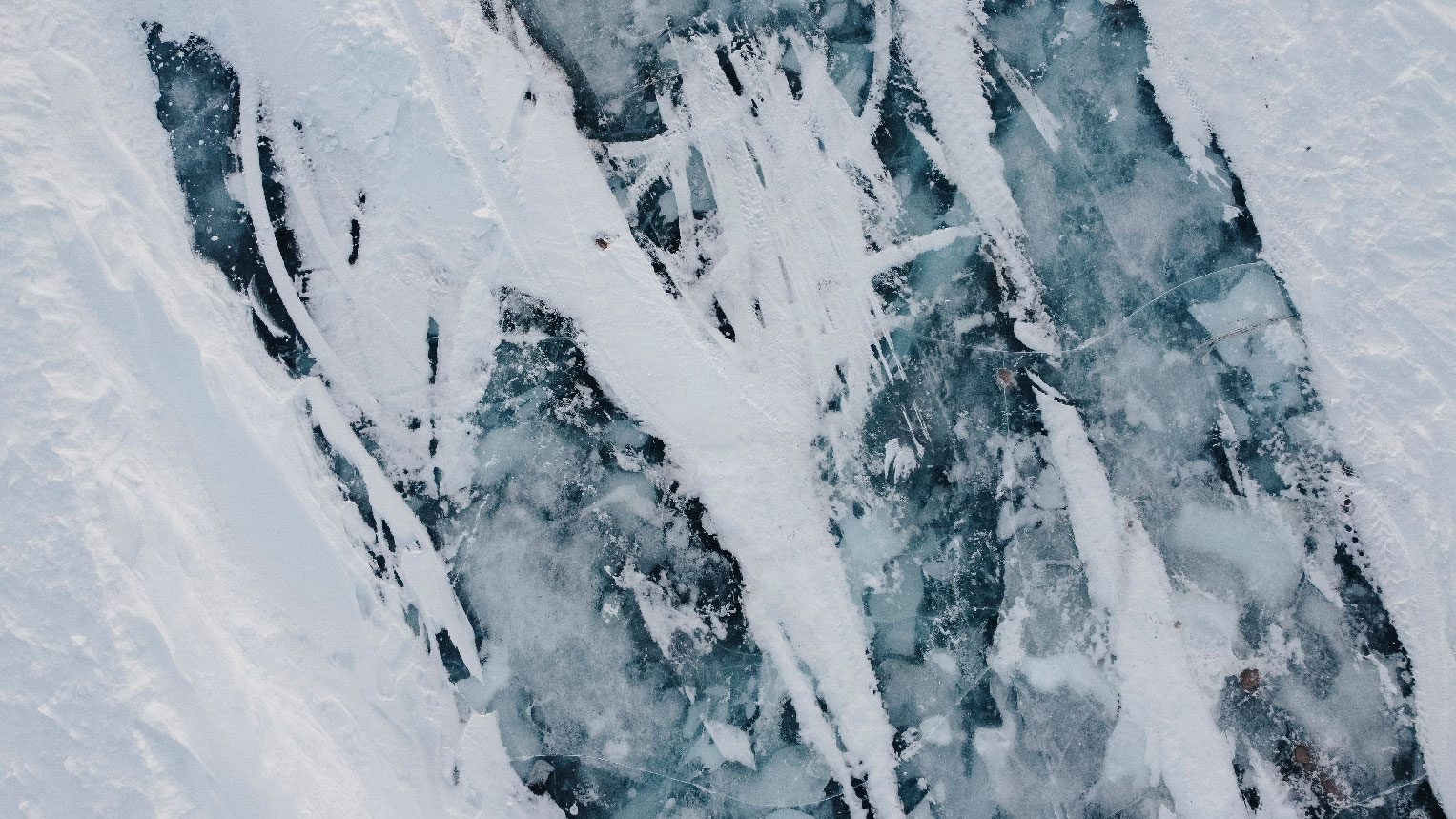
The gas station on the corner of the main street just down from the Northern Store doubles as a restaurant, where morning bannock, lunchtime soup and homemade burgers are staples. Further in from the shore, an arena housing the Syncrude Youth Centre is sandwiched between an aquatic centre and the community hall.
The residential school only closed in 1974, leaving behind lingering trauma that persists across generations.
Now the community is navigating an uncertain future, torn between tradition and the need for jobs and trying to find a way to work with industry while protecting the land. It’s part of a complicated and complex reality in Fort Chipewyan.


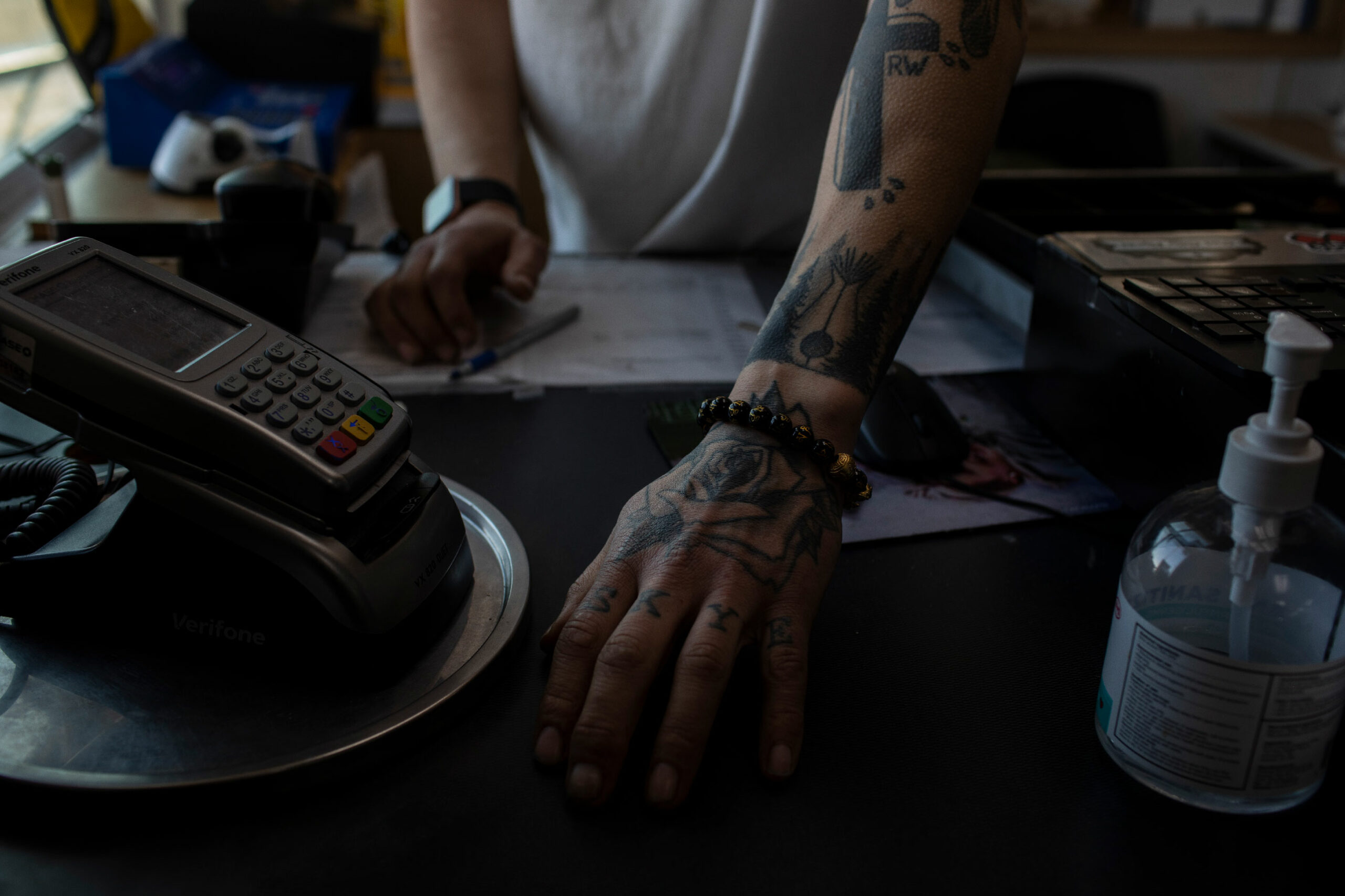
Larry Marten, 73, remembers the land before the hydroelectric dam, named for former B.C. premier W.A.C. Bennett, was built on the Peace River in 1968. The water levels have dropped since BC Hydro built the dam and since the oilsands mines started pulling water from the Athabasca a year earlier.
For years, contaminants from the enormous tailings ponds have seeped into the water, or spilled. The community has seen “higher than expected” occurrences of some forms of rare cancer. There is fear and mistrust despite assurances the water is safe.
Marten still lives off the land, trapping muskrats and martens, and he can tell you in detail about the years when the land flooded or dried up and the impact it had.
The muskrat population ebbs and flows with the water, he says, but they’ll never be as abundant as they were when he started trapping at 16. He doesn’t think there will be any trappers left in 10 or 15 years.
“You get rid of all the trappers, you don’t have to worry about it now,” he says. “When they first had the Bennett dam and they were fighting 50 years ago, they had these meetings about the water. Still going on, 50 years. There’s no change, nothing.”
Marten feels the same sort of fatalism when it comes to the oilsands mines, which now divert more of the flow and pose a risk to habitats and drinking water.
“Well, it’s happening, so there’s nothing you can do about it,” he says. “You gotta fight the government and the government has the say. I say the oil plants are the government, because they pay thousands and thousands of dollars to the government and the government says ‘oh okay, go ahead.’ ”
Throughout the community, there is a sense of inevitability about it all. The oilsands, one of the largest industrial developments on the planet, aren’t going to shut down. The regulator, the government and the companies will continue to expand and operate as long as possible.
Marten still eats the animals he traps. But there is a constant set of questions buzzing in many residents’ heads: Is it safe? Can industry and government be trusted? Where did my cancer come from?


It’s still not known how much wastewater has seeped from Kearl’s tailings area since May of last year. Eleven months later, the leak continues. Imperial’s latest update, posted online earlier this month, says equipment that was supposed to measure the pond level and activate a pump was not working properly.
“There was a gradual buildup in sediment materials, which impacted accurate measurement of the pond level,” the company says in the update.
Routine inspections of the area didn’t detect the rising wastewater, according to the company, due to “winter conditions and low visibility.”
The issue of seepage from the tailings area into groundwater was a source of concern when the Kearl project was moving through a joint provincial-federal environmental assessment and eventually approved in 2007.
The company itself noted the permeability of the ground in the area and estimated as much as 1,000 litres per second could seep into the nearby watershed without mitigation and monitoring measures, which it promised to implement.
The regulator eventually issued an environmental protection order against Imperial for both incidents, nine months after the initial leak. That order served as the first public notice of the contamination and noted excess levels of pollutants in the area, including arsenic, hydrocarbons and sulphides.
Both the company and the regulator insist there have been no indications of impacts to wildlife or fish and, based on Imperial’s monitoring to date, none of the released fluids have entered the river system, but the Athabasca Chipewyan First Nation questions the veracity of the company’s monitoring and testing.
The company was ordered to increase its containment measures for seepage from the tailings ponds, as well as to increase monitoring and pumping to reduce the impact of the ongoing leak. It was also ordered to develop a plan to clean up the contaminated area.
Those plans have not been made public and freedom of information requests submitted by The Narwhal seeking notices of noncompliance from the regulator for both incidents were declined based on exemptions tied to an ongoing investigation.
Requests for emails regarding the incident involving the director of field operations for the area, who signed the regulator’s order, were also denied.
The regulator says the records, 53 pages in total, may be used for prosecutions.
“The [regulator] believes there is a significant risk of prejudicing a subsequent prosecution if the information is disclosed,” reads its justification for withholding the records.
Frustration with the spill and the company’s failure to notify residents downstream came to a head in late March when Imperial hosted a public meeting — its first since the problems were made public on Feb. 6.
The meeting got off to a tense start when Imperial’s representatives forgot to open with a blessing and an offering of tobacco — tobacco they insisted they brought but could not find. Before the company could get to its presentation the crowd began shouting accusations and questions from the floor.
Calvin Waquan, a member of the Mikisew Cree First Nation, confronted Imperial’s vice president of oilsands mining, Jamie Long, with bottles of water Waquan had topped off with motor oil.
“When is enough enough?” he asked.



Most of the anger was directed at the fact the company did not notify residents of the leak for nine months. In doing so, it violated impact-benefit agreements in place with the nations.
“We fish, we trap, we hunt. That is our inherent right. You are taking our inherent right,” Raymond Cardinal said from the back of the room. “That [impact-benefit agreement] you signed with my nation? To me it’s void.”
The frustration meant there were few, if any, answers given.
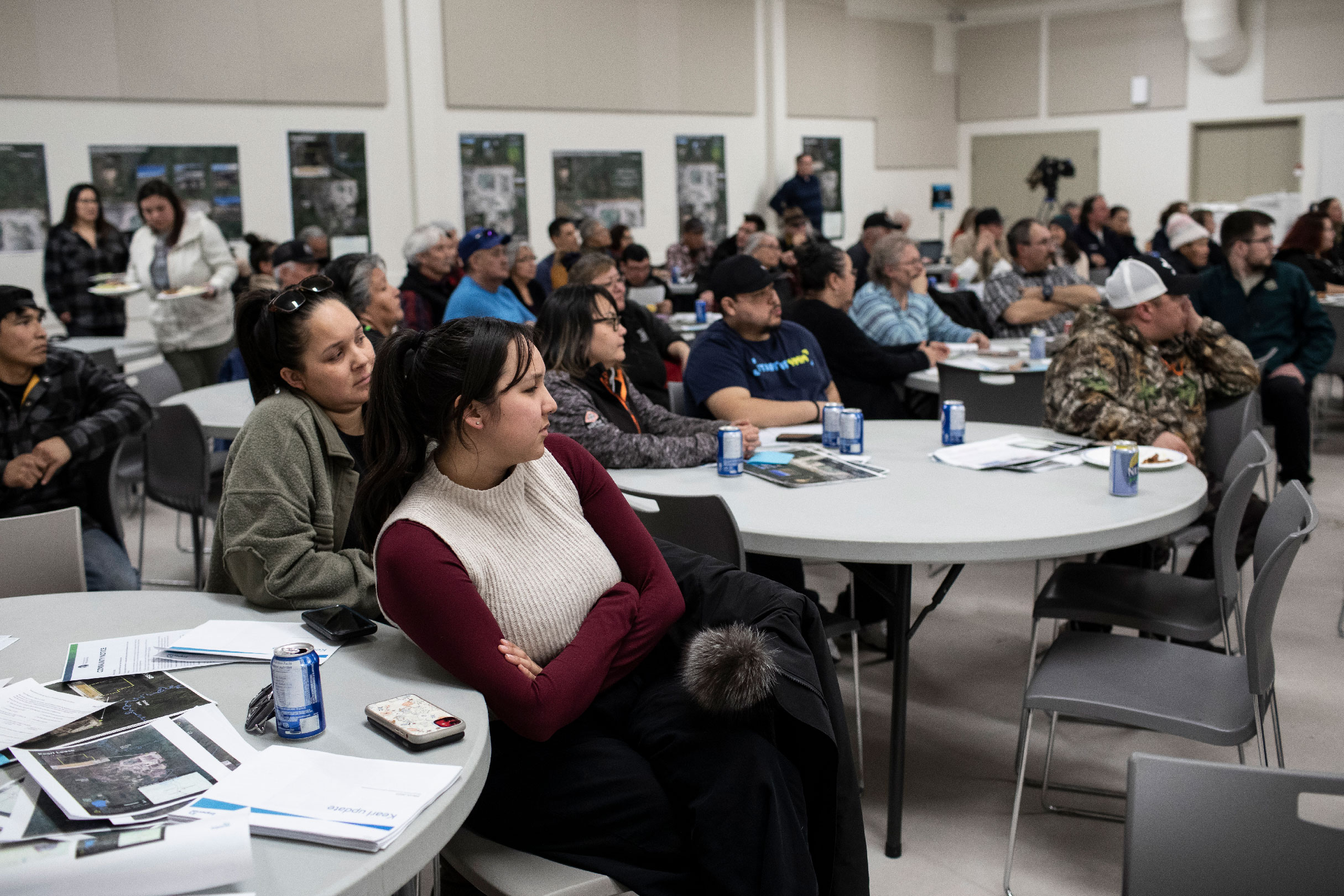

It also exposed rifts in the community, with tensions between leaders, the local government and nations and between different ways of holding Imperial accountable.
“I know that there’s animosity between the [Rural Municipality of Wood Buffalo], nations and whatnot, but I want to reassure you it’s Imperial Oil that needs to be held accountable here, right now, tonight,” said Kendrick Cardinal, the president of the Fort Chipewyan Métis, and the area’s municipal councillor.


Long, who stood at the lectern and took the brunt of the community’s frustration for over an hour, did not provide interviews and quickly left the building. Imperial declined a later interview request from The Narwhal.
Sitting outside the band offices the day after the community meeting, Chief Adam of the Athabasca Chipewyan looks tired but determined. He has led his nation since 2007 and has been both an outspoken critic of the oilsands and a proponent of working with industry.
It’s a fine balance that can be hard to maintain, particularly as he’s called for a shutdown of the Kearl mine until the problems are resolved.
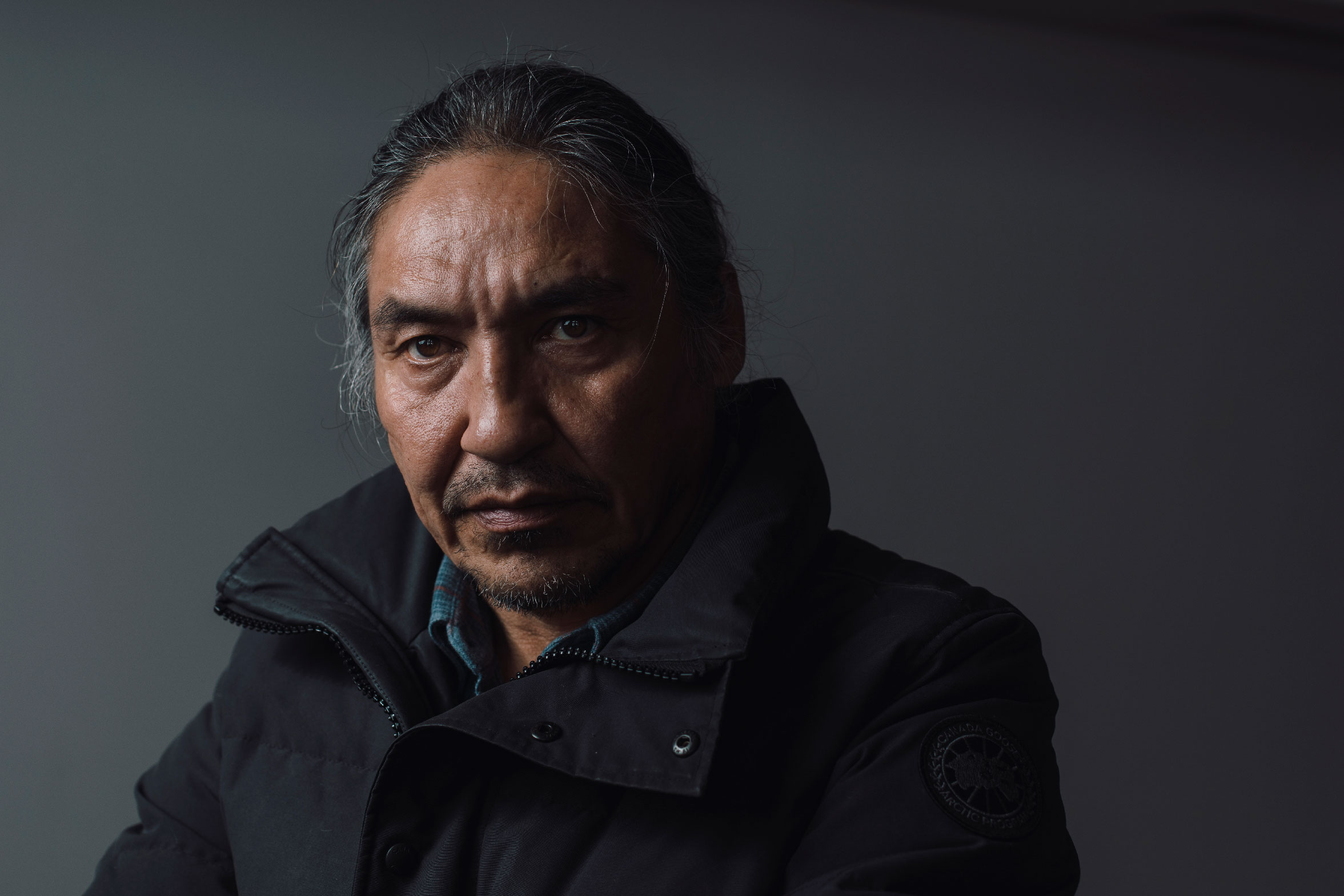
Chief Adam has said from the beginning that his nation would first try to work with Imperial through the agreement it has with the company, but he says the agreement does not close the door on legal action.
“We don’t sign agreements that give away our rights,” he says. “We sign agreements that are going to benefit the community and to work in a safe environment. And if our rights are going to be breached, then we have that legal option to take back to them.”
Those agreements, he says, protect more than just his people. Non-Indigenous community members don’t have the same agreements in place to force the companies to do better.
“We hold them accountable for everybody,” he says.


Echoing others in the community, Adam argues the Alberta Energy Regulator is captured by industry and is too busy rubber-stamping projects without proper oversight or consultation.
“We had the [Alberta Energy Regulator] CEO here, Laurie. I basically told him straight out that we will be seeing each other in court,” Adam says. “It may be a month, two months, six months, a year, 10 years down the road, but I said that we’re gonna see each other in court because of what happened here.”
On March 28, the regulator said it will commission what it calls an independent review into “certain aspects of the [regulator’s] response” to the leaks and the spill. It is seeking a third party to oversee the process.
The request for proposals for overseeing the review closes on April 21.
Adam says the nation is busy collecting its own evidence, despite setbacks. The nation said its testing team was denied access to the Kearl site for seven weeks. When they were finally allowed access on March 17, they were forced to wait at the gate for seven hours before being allowed into the site. The team had to return the next day because it was not allowed to gather soil samples the first day.
An Imperial spokesperson did not respond to a question about delays for Athabasca Chipewyan staff at the site, and whether the company has taken samples from fish or wildlife for testing.
But the nation isn’t just focused on collecting data on the Kearl mine and its leaks, it is monitoring the broader delta as well, hoping to understand the cumulative impacts of industry.

Beyond the economic, political and social complexity of the region, it is also incredibly difficult to trace straight lines between contamination and an individual mine, or between health impacts and contaminants.
Imperial’s own investigation into where the wastewater was coming from took almost six months to definitively confirm the source.
Bitumen lines the river banks here, and the water contains traces of it throughout the basin. The first step is always trying to determine what is natural and what is not. What exceeds regulations and what does not.


That complexity can also act as a shield for companies who run the mines, where seepage into groundwater is a known problem and where tailings ponds would decimate the river basin should they breach.
It’s common to hear locals complain about being presented with endless data and jargon that is impossible to understand. At the community meeting with Imperial, the company pointed to yearly reports when questioned about public information on contamination levels before and after the spill.
Those yearly reports include almost 1,000 pages of dense technical information and are not available on its website.
Elders like Marten can tell you about how the land has changed and the animals have disappeared, but say they are easily swamped by companies and their data.
It’s part of why the nations collect their own.
“We do have the ability to respond technically, if we’re told that things are happening,” Bruce Maclean, an environmental scientist who helps run the community-based monitoring programs for the Athabasca Chipewyan and the Mikisew Cree, says. “We weren’t told [about the leak]. And then we have this rush. Now, we only have two weeks to figure everything out before the water intake has to be turned back on. That’s bullshit. So that makes people frustrated and stressed out.”
Maclean also works with the newly established Nipîy Tu Research and Knowledge Centre, a collaboration between the nations and the Métis that looks at how their rights are being impacted by industry and government — from access to the land, the health of animal populations and the contamination levels in those animals.
The centre, still in what Maclean calls a “soft start” phase, incorporates Traditional Knowledge, western science and youth education and has partnered with Parks Canada and Environment Canada to help monitor the environmental impacts on nearby Wood Buffalo National Park.
It’s why Marten was in town the day after the meeting to drop off muskrats at what’s called muskrat camp. A survey of muskrat populations has been going on for years, but the camp is a new iteration of the old idea, incorporating contamination monitoring and education.





The camp, a three-day gathering at a collection of small canvas tents and a cabin on the outskirts of town, allows trappers like Marten to pass on their knowledge to youth or anyone else who cares to learn. Sitting in one of the small canvas tents, Marten showed how to skin the animals and then stretch their inside-out hides over a wood board for drying next to the stove.
Maclean was helping to oversee the camp and to collect some of the skinned muskrats for inspection.
He says the monitoring program has 10 years of monitoring data so if the chief and council come to them and ask about samples, they can put the levels in a historical context and say whether the trends are concerning or not in a given year.
But there’s only so much they can do.


“There’s this huge giant impact around the system,” he says. “It’s hard to just single out one company and say, ‘Well you guys screwed up,’ because they’re part of the screwed-up system.”
Maclean also can’t translate what’s in the environment to its impact on people’s health. Community members, he says, don’t much care whether you tell them there’s four micrograms of arsenic in their water or 16.
“Does that make anyone feel better? It doesn’t,” he says.
There are immediate concerns the community has to tackle. The water intake for the town reservoir from the Athabasca River recently reopened and the spring melt is coming.
There is concern the melt could wash contaminants down the river or increase the impacts at the Kearl site.
Many don’t trust the municipality, the company, the regulator or the province when told the water is safe to drink.
But the real battle will take months or years.

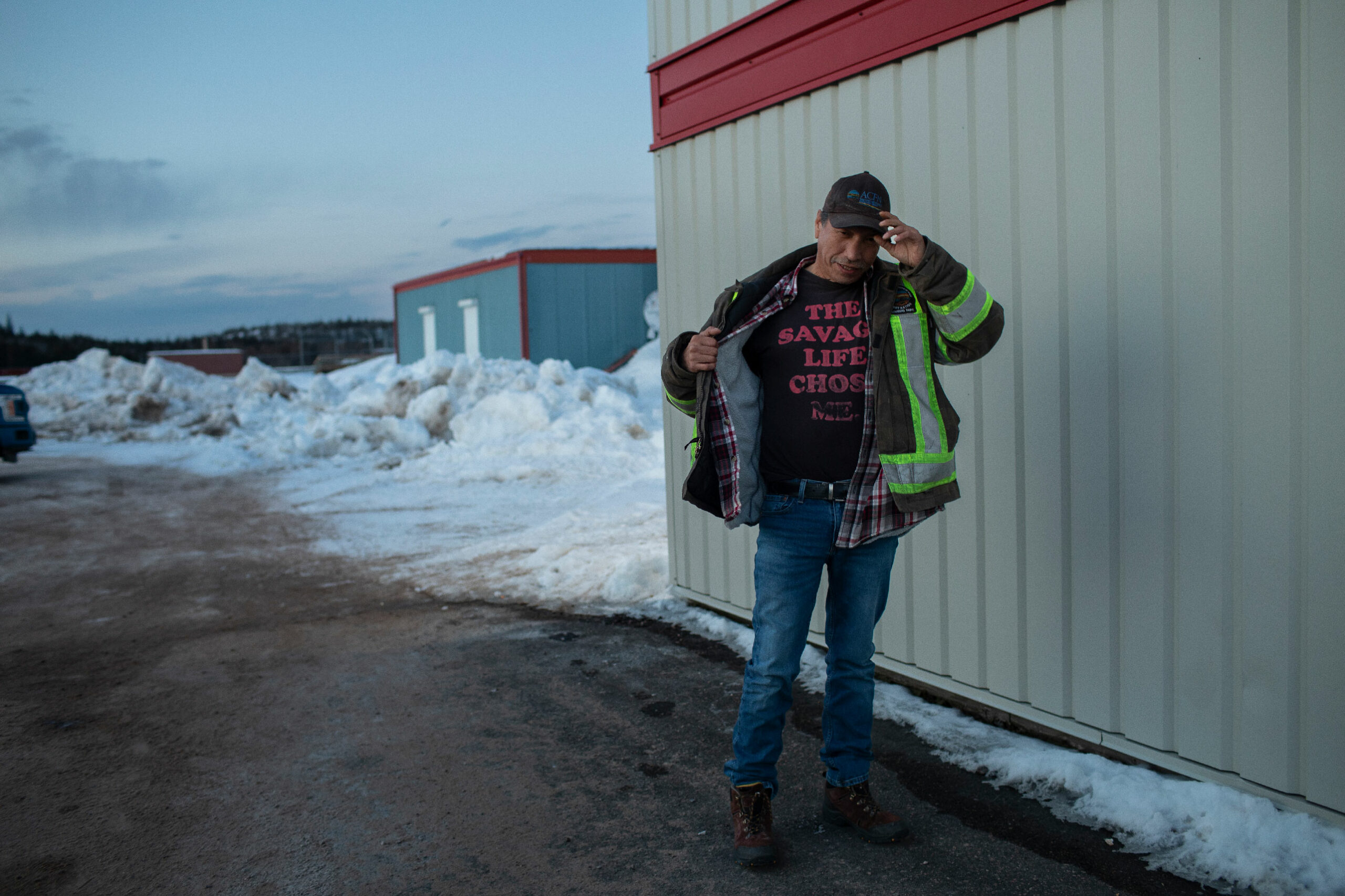
Chief Adam says he is pushing hard for a real seat at the energy table. First Nations are asked for input on projects and initiatives, but have no say on final decisions. He doesn’t think it’s appropriate for the regulator and the energy companies to bring a project forward and ask Indigenous communities to justify their concerns as part of what he sees as a token process.
“In regards to oversight, in regards to the Alberta Energy Regulator, there has to be an oversight standing committee to sit at the table when industries are applying for licences,” he says.
His own people will be keeping a close eye on the Kearl site and visiting other oilsands mines to check for problems and conduct monitoring.
Federal Environment Minister Stephen Guilbeault has said he wants to see changes to the way environmental monitoring and communications are handled in the region. He wants to bring Indigenous nations, the province and the federal government together to talk about what went wrong at Kearl and how to improve future responses. He also wants that body to examine independent water monitoring, rather than the current industry-led model.
Adam wants to see the government finally study the health issues in the community, a pressing concern ever since a local doctor identified a spate of rare cancers in Fort Chipewyan. The study was promised over a decade ago.




“Where’s all the concerns? Where’s the studies that we’ve been asking for in relation to all the cancers that continue to happen that nobody wants to talk about?” he says.
“So why do they continue to issue the licences? Where’s the oversight? We need oversight. Without the oversight, we have nothing and this will continue to happen. And we can’t allow it to happen. It has to stop.”
Chief Billy-Joe Tuccaro of the Mikisew Cree says there can’t be a solution for the next one or two months or one that simply responds to the issues at Kearl.
But it’s not just local nations, or their leaders, who are pushing for change.


L’Hommecourt was just in the Northwest Territories for a meeting on water organized by the Dene Nation, Inuvialuit and the Northwest Territory Métis Nation.
There have long been concerns about the water heading north from the oilsands, and the Kearl contamination led to complaints by the territorial government about violations of a bilateral water management agreement with Alberta.

L’Hommecourt says she was there to alert them to what’s coming and to stand together as many nations to have their voices heard.
She wants Imperial to stop operating until the problems with the leaking tailings is solved and doesn’t want to see any future expansions. She wants companies to start reclaiming land before digging up more.
For L’Hommecourt, there is no balance left. The complex relationship between industry and the people has tipped too far, to the point where she feels only one side benefits. She says she has watched children throw up and cry with burning eyes from an ammonia leak. She has been told not to drink the water, or bathe children in it. She recounts how she has watched as her people’s inherent rights have all but disappeared.
“The resource extraction is mainly beneficial to the outside world, it seems we don’t see the real benefits. What we’re seeing are the impacts to our lands, to our water, to our people,” she says.
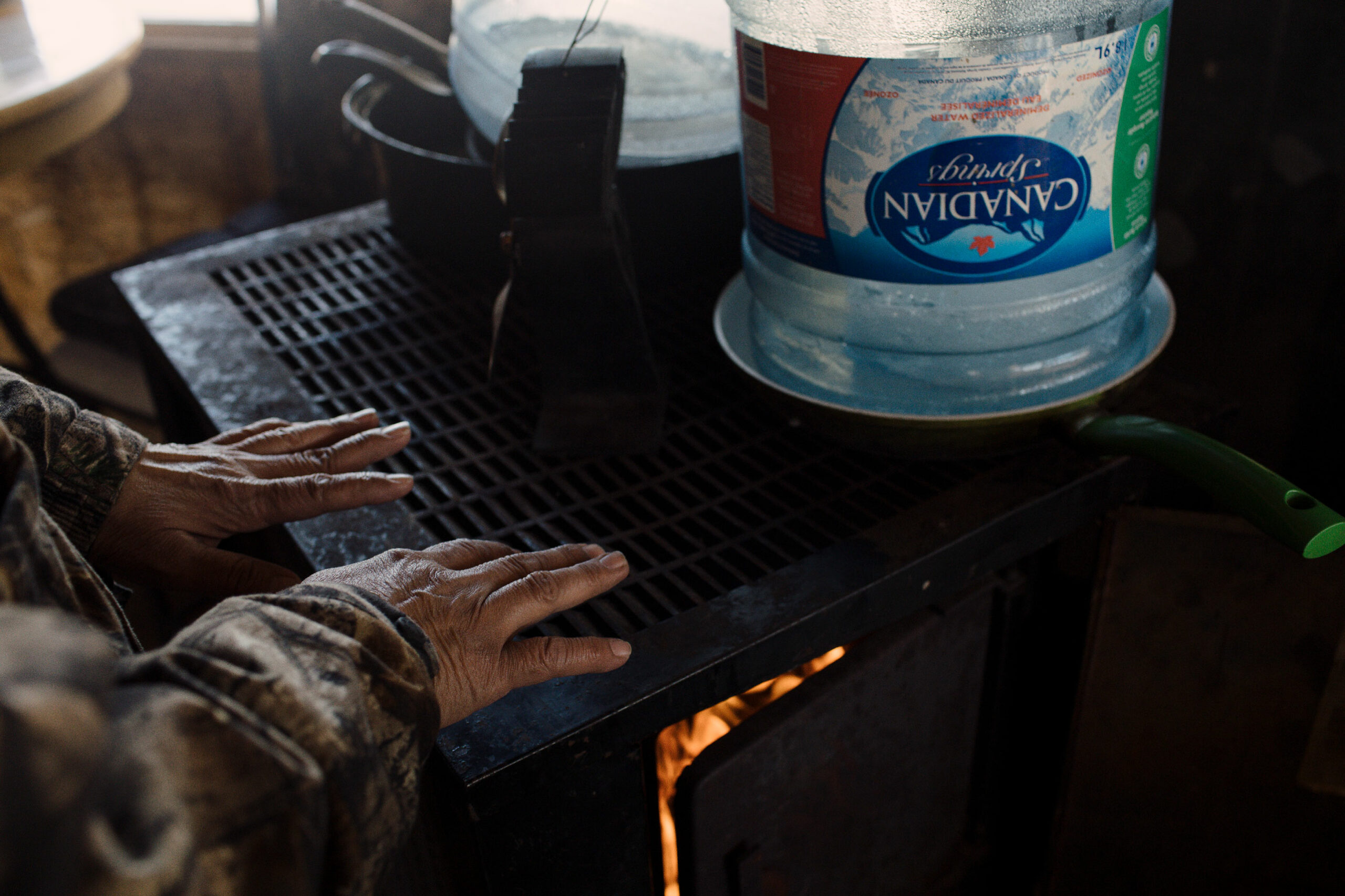

“It stresses a person out, especially a woman, an Indigenous woman, because we rely on everything to feed our children. You mess with that,” she says, trailing off before she finds the word she is looking for. “It’s genocidal, is what it is.”
Back at her camp, hemmed in by aspen trees and frequented by bears, lynx, moose and gray jays, she says she doesn’t use the snow or the creek water anymore, not even for washing. It’s too close to Kearl.
Get the inside scoop on The Narwhal’s environment and climate reporting by signing up for our free newsletter. On a warm September evening nearly 15...
Continue reading
115 billion litres, 70 years to fix, $5.5 billion in lawsuits

Climate change, geopolitics and business opportunities power a blue economy

10 billion litres of sewage are dumped into Winnipeg’s lakes and rivers each year. Some...
